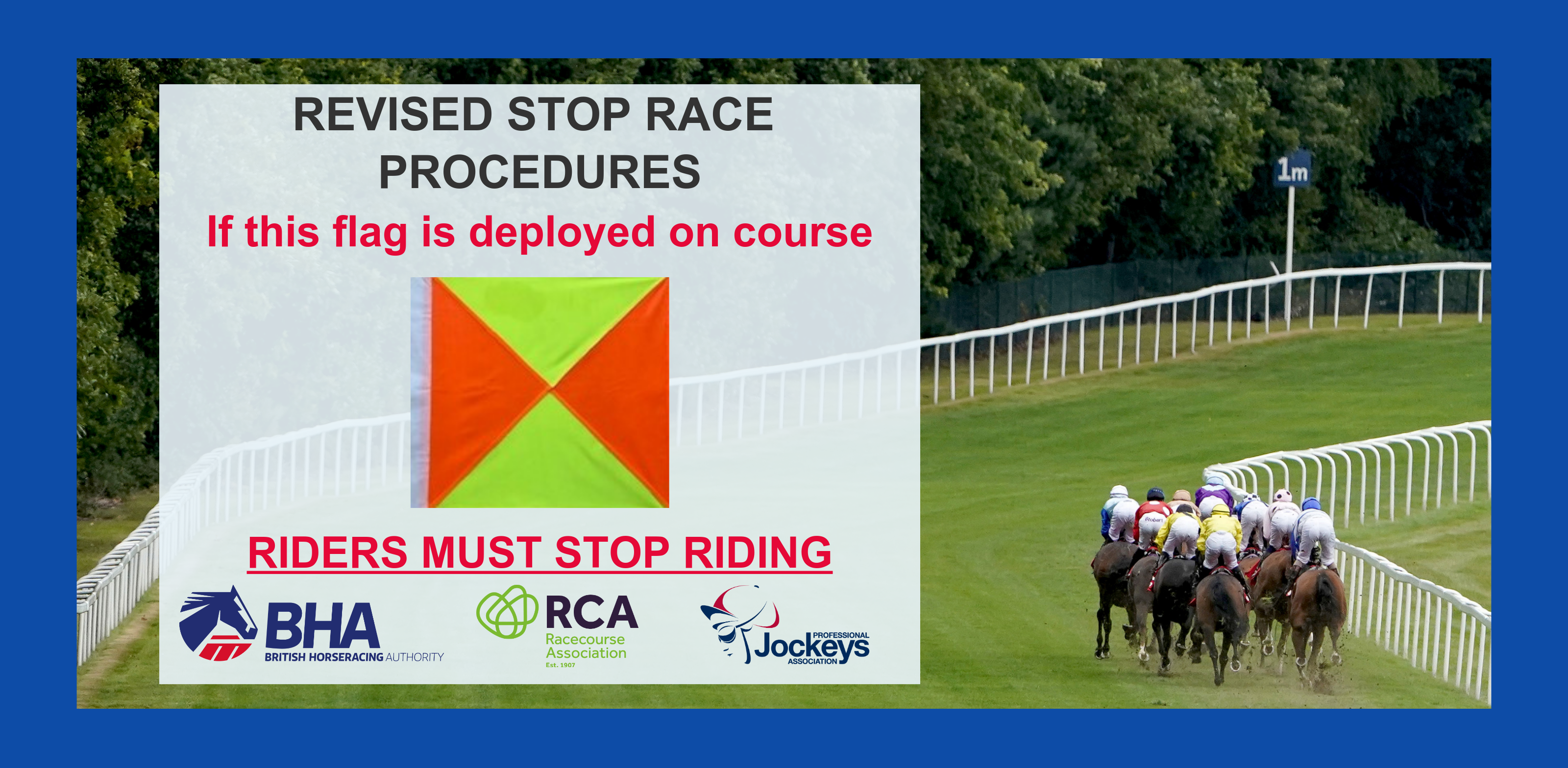
Revised stop race procedures for British racing have been confirmed today, which will take effect from 4 January 2021.
Developed by the British Horseracing Authority (BHA) in conjunction with the Racecourse Association (RCA) and Professional Jockeys Association (PJA), changes have been made to ensure the procedure is as clear and safe as possible for riders, racecourse staff carrying out the procedure and for those on course and watching on.
The main changes are as follows:
- The stop race flag has been re-designed from yellow to orange and yellow quarters, to be as visible as possible and consistent with other racing jurisdictions
- The stop race procedure now explicitly requires multiple flags to be deployed, either in multiple locations or multiple flags in one location if that is all that is possible
- Fox 40 whistles will continue to be used, but there will now be no additional verbal instructions to ensure only the sound of the whistle can be heard
- There will be tailored announcements via the public address system to ensure there is as much clarity as possible for those on course and broadcasters
The stop race flag will continue to be used by starters and advanced flag operators to ensure there is consistency for riders and that deployment of the stop race flag means they must not continue riding, irrespective of their position on the course.
The current procedures can be viewed here (page 41), with the procedure to take effect from 4 January available here. Training is already underway with racecourses and riders to ensure all involved clearly understand what is required in the event of the stop race flag being deployed; stop race flags along with chequered hazard ahead flags will continue to be displayed in weighing rooms and changing rooms on every British racecourse.
Cathy O’Meara, Head of Raceday Officials at the BHA, said:
“It is of paramount importance for the safety of all those involved, whether riding in the race or officiating the stop race procedures, that there is absolute clarity about what to do when the stop race flag is deployed.
“Under these revised procedures there will be one type of highly visible flag, deployed either in multiple locations or multiple times in one location, and one sound, to denote that riders must stop riding.
“We’ve also added in more clarity for those watching on course or via broadcasters, to ensure communication is clearer in the event of a void race. Working closely with the RCA and PJA has allowed us to come up with new procedures which we believe will work for everyone, and above all ensure that all the relevant parties are clear about what to do if a race has to be stopped.”
Caroline Davies, Racecourse Services Director at the RCA, said:
“These new stop race procedures are designed to be a definitive, unambiguous signal that can be deployed swiftly if needed.
“The safety of racing’s participants is of utmost importance. The RCA, together with the sport’s tripartite leadership, will continue to research and implement new measures to maintain the high levels of protection expected from British racing.”
Paul Struthers, Chief Executive of the Professional Jockeys Association, said:
“By their very nature, stop race procedures are implemented at short notice, so clarity and consistency is essential in minimising any risk to riders, horses, and racecourse staff.
“We believe the use of multiple flags, deployed at the earliest possible stage, will serve this purpose and hopefully prevent some of the incidents we have seen previously.”
